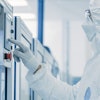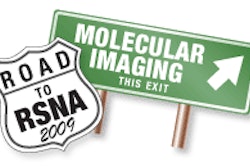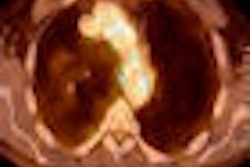Sunday, November 29 | 11:45 a.m.-11:55 a.m. | SSA12-07 | Room S504CD
Among the preclinical studies at RSNA 2009, researchers at this scientific session presentation will cover preclinical research that indicates that FDG-PET may aid in the early diagnosis and therapeutic assessment of acute lung injury -- before it can be visualized on radiography.The study follows previous research from University of Utah researchers who reported that diffuse lung uptake of FDG by PET may herald the development of acute respiratory distress syndrome (ARDS) prior to the radiographic and clinical manifestations of the disease.
In this study, male rats were injected with 10 mg/kg of lipopolysaccharide (LPS). Lung uptake of 2-deoxyglucose analogs was measured by FDG-PET, digital autoradiography, and digital fluorescence at baseline and at two, six, and 24 hours after LPS injection. Within the lungs, significant uptake of all glucose analogs occurred as early as two hours following LPS and progressively increased to 24 hours.
"The pulmonary inflammatory response occurring in acute lung injury is a complex process that is difficult to measure by the usual imaging methods," said co-author Dr. Rosana Rodrigues, a radiologist at University Hospital at Federal University of Rio de Janeiro.
"Chest x-rays and CT evaluate only morphological changes," she said. "Open lung biopsy may not provide representative samples, because the disease is often patchy. PET and PET/CT have an enormous potential for monitoring cellular and biochemical events in otherwise inaccessible tissue, being a noninvasive, quantitative, and very sensitive method."
Rodrigues added that while there currently are no specific therapies for acute lung injury, a noninvasive mechanism to assess disease activity or therapeutic benefit would "potentially contribute new insights into the pathogenesis and natural history of the disease and also aid in the development of novel approaches to its treatment."




















